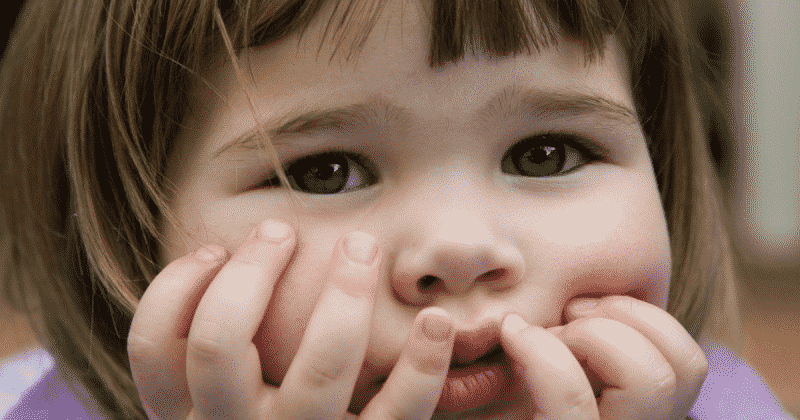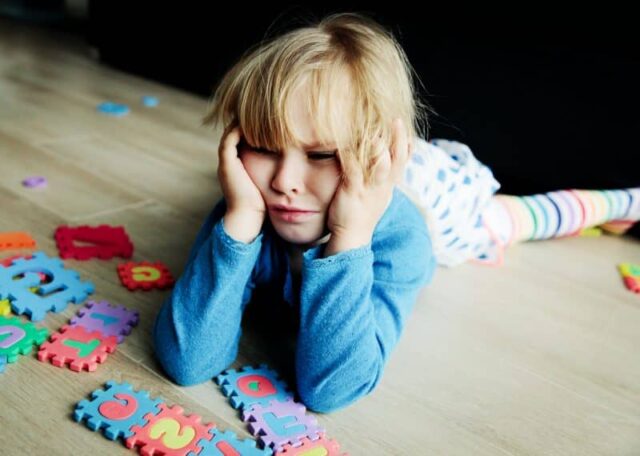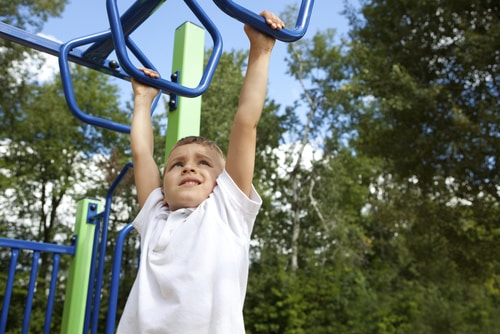Serious Symptoms Of Food Allergy In Toddler You May Not Notice

Food allergy is a prevalent health issue worldwide. It is a medical condition where a certain food can trigger a harmful response inside the body. The immune system then begins to attack food proteins as a result. 32 million Americans have some type of food allergy. This includes 5.6 million children under 18, according to the Food Allergy Research and Education group. That is about one in every 13 children to put it into perspective. Over 170 foods can cause allergic reactions. However, the most common allergens include milk, eggs, peanuts, tree nuts, wheat, soy, fish, and shellfish.
Anaphylaxis is a serious allergic reaction that many young children experience. In fact, every three minutes, somebody goes to the emergency room from a serious food reaction. About 200,000 people go to the hospital yearly for allergic reactions. Additionally, 40% of children with allergies have experienced anaphylaxis. This is why as a parent, it is important to know all of the signs and symptoms of food allergies. If your child has food allergies, it is imperative for you to keep an Epi-Pen inside of your home. Read on to find out more about food allergy symptoms:
Itchy mouth


If your toddler tells you that their ”mouth hurts” after tasting new food, it could be a red flag. It could be a condition called oral allergy syndrome. When children have oral allergy syndrome, they develop allergies to food that they did not have before. Symptoms of this disorder include itching around the mouth, tongue, or throat, swelling in or around your mouth, a strange taste in the mouth, and itchy ear canals according to Healthline. Often these symptoms are normal, but could also be serious if it leads to anaphylactic shock. If you believe that your toddler has itchy mouth due to an allergic reaction, take your child to the emergency room immediately.
Eczema


Eczema, also known by its medical name, atopic dermatitis, is a very common skin condition. As many as one in five infants develop the condition according to Stanford Children’s Health. And 60% of children develop eczema at some point in their lives. But did you know that eczema could be a sign of an allergic reaction or sensitivity to environmental factors? If your child develops scaly skin, small bumps, and redness, or a thickening of the skin, they could have eczema. If your child has eczema, pay special attention to what they are eating. Also, see a doctor for recommendations to help treat eczema.
Swelling of parts of the body, such as lips, face, and tongue


If your child has swelling of sensitive parts of their body, such as their lips, face, or tongue, a condition called angioedema might be to blame. Angioedema is the swelling of tissue under the mucous membranes, according to Very Well Health. This condition could become life-threatening if it affects the gastrointestinal tract, lungs, or throat. Allergic reactions usually cause angioedema in patients. If your child’s face is swelled, take them to the emergency room immediately. It is important for them to see a doctor so that they can test for allergens. It could also help to keep a diary of foods that your toddler consumed so that you can find out what they are allergic to quicker.
Trouble breathing or wheezing


Toddlers are often very active and are constantly running around. So if you notice that your child is having trouble breathing, it might come as a surprise. If your toddler is wheezing, they might have a sensitivity to the environment or certain foods. If your child is wheezing or having other difficulty breathing, take them to the emergency room right away so that they can be evaluated by a doctor. Wheezing can also be a sign of childhood asthma, a common condition, especially in urban areas. If your child has asthma, often allergies and asthma come hand in hand. According to WedMd, allergies are the #1 trigger for asthma attacks.
Abdominal pain


If your child is holding their stomach or complaining of stomach pain, it could be a sign of food intolerance. This includes both cases of allergic reactions or food poisoning. For either case, the symptoms remain the same and include nausea, vomiting, bloating, and diarrhea. If your toddler is experiencing these symptoms, take them to the doctor so that you could find out for sure if your toddler is experiencing food allergies or food poisoning. Common types of food intolerance include lactose in dairy products, wheat, gluten, caffeine, histamines, and additives, such as artificial sweeteners and flavors, according to Medical News Today.
Nausea or vomiting


When your usually energetic toddler is experiencing nausea or vomiting, it can be from the flu. After all, when children attend play dates, daycare, or Pre-K, they are around more children and are therefore more susceptible to bacteria and viruses. But sometimes this is not the case. If they do not have a fever, they could have a stomach virus that is caused by eating food that has the virus in it. Symptoms include diarrhea and stomach cramps and should each up in 24 to 72 hours. Food allergies could also be a cause and can be followed by other symptoms, including trouble breathing, hives, cough, wheezing, or trouble swallowing, according to WebMD.
Diarrhea


Usually, babies and toddlers have looser stools than adults, since they drink more fluids and eat mushier foods than adults. But if your toddler is constantly releasing runny stools, it could be a red flag. Often diarrhea is caused by a viral, bacterial, or parasitic infection. But if this is ruled out, food allergies could also be a cause. Doctors could find out the cause of diarrhea by taking a stool sample to send to the lab for analysis, according to Kids Health. If there is no germ or virus causing the illness, food sensitivity could definitely be to blame.
Rapid pulse


Toddlers generally have a faster pulse than adults. A normal pulse for adults is anywhere from 60 to 100 beats per minute, according to Mayo Clinic. The normal pulse for the average 2-year-old is 90 to 150 beats per minute, according to WebMD. For a preschooler, it decreases slightly to 80 to 140 beats per minute. However, a toddlers heart rate could become as high as 220 beats per minute if they are doing physical activity. If your toddler’s heart rate is elevated without physical activity, it could be a red flag. Stressors in the body, such as allergens, could cause a child’s heart rate to greatly increase.
Swollen throat


Often when your child has a sore throat, the first things responsible for the illness is strep throat, a cold, or even tonsillitis. But if your child complains that their throat hurts after trying something new, their sore throat can be caused by an allergen instead of a virus. If your child has a swollen throat, it could lead to a constriction in their airways and cause them not to be able to breathe. If your child is experiencing airway constriction, they could turn blue in the face or body. Since airway constriction is severe and life-threatening, it is imperative that you take your child to the emergency room right away if your child is experiencing swelling of the throat.
Drop in blood pressure


Normal blood pressure is somewhere between 90/60 and 130/80. Children can experience a natural drop in blood pressure if they have been standing up for long periods of time or if they sit or stand up suddenly. Symptoms of hypotension, or pediatric low blood pressure, include blurred vision, dizziness, weakness, fatigue, fainting, and nausea, and vomiting. One of the most common causes of low blood pressure for children is life-threatening anaphylaxis, according to Children’s Health. If your child is showing any symptoms of hypotension after eating something new, bring your child into the emergency room to prevent your child from going into anaphylaxis shock.
Excessive gas


It is normal for people to pass gas may times a day, according to About Kids Health. A lot of times, if your child experiences excessive gas, it is not serious. Often, even if excessive gas is caused by foods, it can be caused by ones that are high in fiber, such as beans, broccoli, or cabbage. If your child is experiencing bloating or pain in their stomach, probiotics can help your child to make stools. If excessive gas is paired with frequent vomiting, loss of appetite, blood in the stool, and distended abdomen, then it could be a red flag. Excessive gas could be a sign that your child ate something that they are sensitive to and could result in nausea, vomiting, or diarrhea. If either is the case, it is imperative that you see your doctor to find out the cause.
Indigestion


Indigestion, or upset stomach, is another symptom that is usually perfectly harmless in toddlers. Toddlers can experience indigestion if they ate food that they are sensitive to, such as spicy food. Indigestion can also be caused by either a food allergy or food intolerance. Symptoms of food intolerance include bloating, heartburn, headaches, and irritability. Symptoms of food allergy include rash, shortness of breath, chest pain, and sudden drop of blood pressure. When indigestion is paired with other more severe symptoms, such as vomiting, loss of appetite, shortness of breath, sweating, or sticky, black stools, it could be a more serious condition, such as a severe allergic reaction.
Flushing


Flushing in toddlers is usually most prevalent on their face, but it also includes their neck or upper chest. Toddlers can wake up with a flushed face or chest if they were overheated while they were sleeping. But flushing can be dangerous if it is paired with other symptoms, such as fever, fatigue, loss of appetite, diarrhea, or cough. Skin rash and hives can be mistaken for flushing in a toddler. These rashes and hives are red in appearance and can be caused by food allergens or bug bites. If your child ate something new or was exposed to pests, such as bees, wasps, or mosquitoes, an allergic reaction can be causing their skin to turn red.
Itchy ear canal


If you notice your toddler pulling or tugging their ears or if they complain that their ear itches, then they could be having an allergic reaction. Itchy ear canal usually goes hand in hand with itchy mouth or throat. According to Healthline, itchy ears and throat could be harmless and easily treated at home. However, when itchy ears and throat are paired with other symptoms, such as stomach cramps, vomiting, diarrhea, and hives, it is most likely the result of a food allergy. If itchy ear and mouth are paired with more severe symptoms, such as shortness of breath, wheezing, mouth swelling, or trouble swallowing, it could be the result of anaphylaxis.
Trouble swallowing


In many cases when babies or toddlers have trouble swallowing, a condition called eosinophilic esophagitis could be responsible. Most cases of eosinophilic esophagitis are caused by some type of food allergy reaction since 50% of people with the condition has either allergies or asthma. This can cause inflammation and injury in the esophageal tissue. In toddlers, eosinophilic esophagitis can cause issues including irritability, loss of appetite, and trouble with gaining weight. When patients are diagnosed with eosinophilic esophagitis, a routine food allergy test is performed to determine what foods the toddler is sensitive to.
Turning blue


Blue skin around the lips or skin is otherwise known as cyanosis. If your toddler has blue lips or skin, it is a sign that they are not getting enough oxygen in their body. Cyanosis could affect the heart, lungs, or airways. If cyanosis affects the airways, it is most likely a symptom of anaphylaxis. Blue skin is a more severe symptom of an allergic reaction, so it is usually paired with other symptoms that indicate low oxygen levels, including airway constriction and trouble breathing. It is important to seek immediate medical attention if your child has blue lips or skin.





